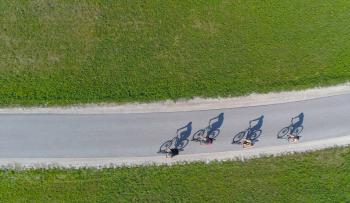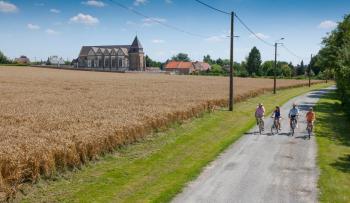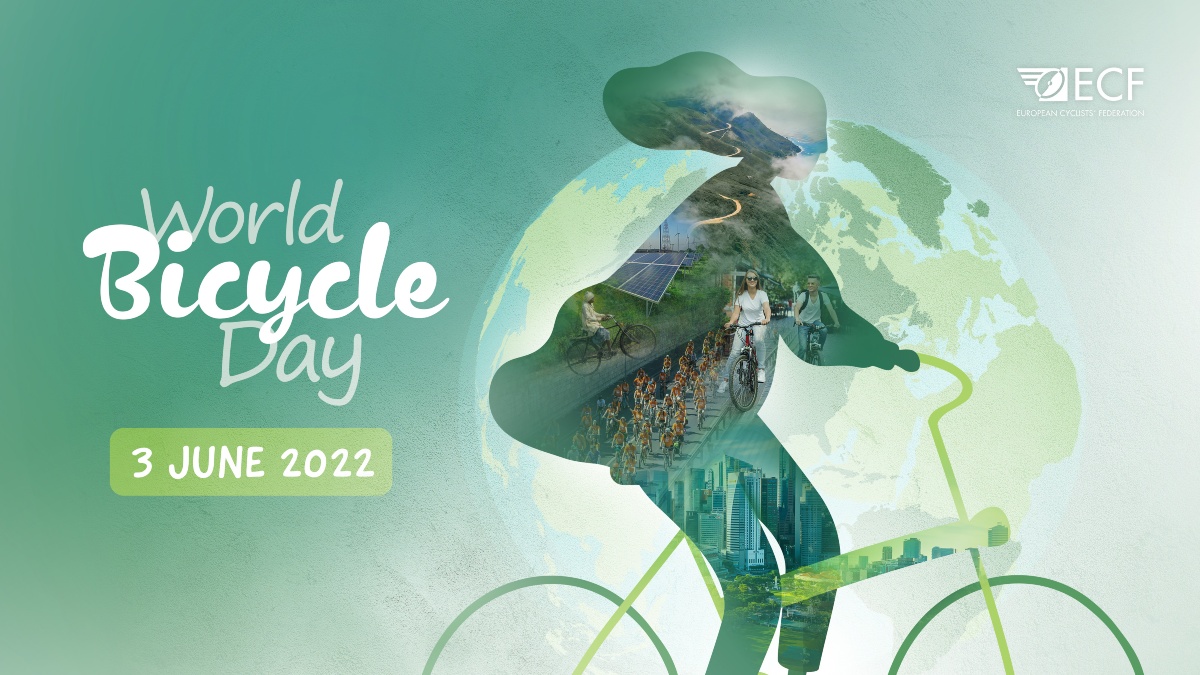
World Bicycle Day 2022: What does cycling mean for our cities, planet and future?
ECF outlines how the bicycle can shape our future for the better, as we count down to World Bicycle Day 2022. Want to find out more? Don’t forget to register for our free high-level webinar on 3 June!
On 3 June, the European Cyclists’ Federation (ECF) will host a free webinar featuring numerous cycling and sustainable mobility advocates from around the world to celebrate World Bicycle Day. We have been celebrating this day every year since the United Nations General Assembly adopted a resolution in 2018 to annually commemorate the bicycle. But this year feels special.
Collectively, we have finally recognised that our reliance on fossil fuels has caused immense damage to our planet and climate. Russia’s brutal invasion of Ukraine shows that this dependency can be very problematic for geopolitical reasons too. Transport, and an over-reliance on private motorised vehicles, makes up a significant share of our dependence on fossil fuels.
Increasingly, governments and individuals are looking to cycling as the answer. This is why World Bicycle Day this year feels even more momentous than previous years.
You can share the experience with us. Register for the ECF World Bicycle Day webinar here.
Growing global recognition for cycling
After tenacious campaigning by ECF and its partners at the COP26 conference in Glasgow in November 2021, transport ministers underscored that “a sustainable future for road transport will require wider system transformation, including support for active travel.” This was a first.
In March 2022, the United Nations General Assembly unanimously adopted a resolution urging governments to integrate cycling into their transport systems to ensure sustainable development and reduce transport emissions.
The European Union is a leader in the global recognition of cycling. Its new framework for urban mobility policies states that a “clear priority should be placed at the national and local level on the development of public transport, walking and cycling …” The EU is following up on this ambition with new rounds of funding for cycling projects and including cycling measures in its list of policy actions to accelerate Europe’s transition away from fossil fuel dependence.
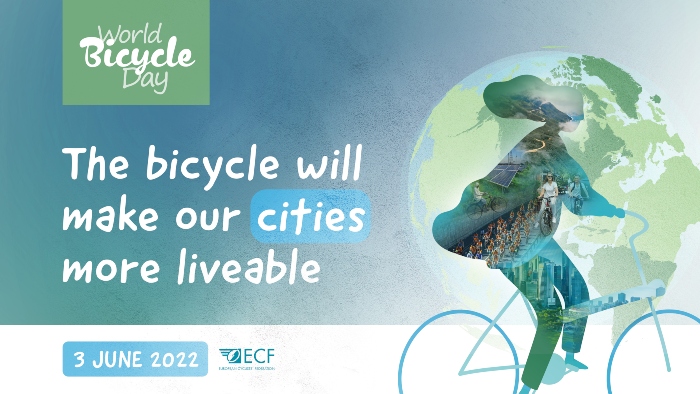
What does the bicycle mean for our cities?
As ever, cities set the example. They are where cycling’s potential can really shine.
Getting more people to cycle, particularly by swapping their car journeys for bike journeys, leads to cleaner air. The Lancet Commission on Pollution and Health just updated its findings to show that pollution is responsible for approximately nine million deaths per year, which is one in six deaths worldwide. Transport pollution is a significant contributor to these deaths, and exhaust pipe emissions account for up to 30% of fine particulate matter in urban areas. Motorised transport is the largest source of nitrogen dioxide and benzene emissions in cities. Simply put, we need more cycling to have cleaner air in our cities.
More cycling also decreases noise pollution, which studies show is as harmful as air pollution, as sound levels produced by road traffic often exceed acceptable levels and carry negative impacts on human health. Paris is showing how cities can innovate to combat noise pollution by combining cycling with the installation of monitors throughout the city, identifying motorists who flout urban noise regulations.
Another major effect of more cycling in cities is the improvement in livability and road safety. The implementation of 30 kph speed limits in various cities across Europe are slowing down motor vehicle traffic and leading to big reductions in road deaths, such as in Brussels where there has been a 50% reduction in road fatalities since the implementation of 30 kph speed limits. These practices open opportunities for people to cycle, because one of the main barriers for people to cycle is their perceived threat of danger on the roadways.
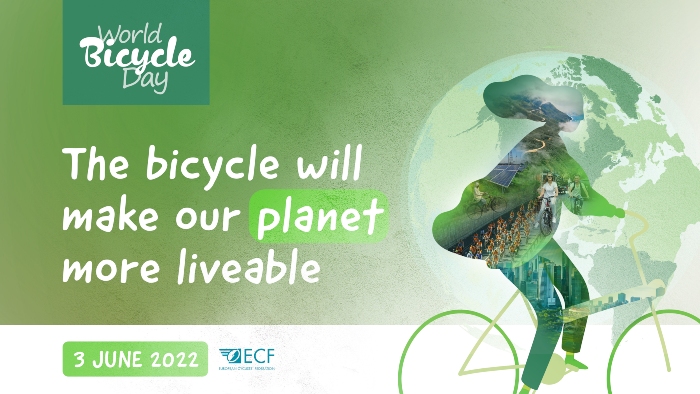
What does cycling mean for our planet?
The world cannot achieve its goals to cut greenhouse gas emissions caused by transport without significantly more cycling.
The IPCC Sixth Assessment Working Group III Report released in April recognised that fundamental changes in transport systems, and the demand-side options they provide, can have a major role in reducing greenhouse gas emissions. The report’s authors made a clear case for prioritising “car-free mobility by walking and cycling” to significantly save on emissions, writing that “meeting climate mitigation goals would require transformative changes in the transport sector” with, among other actions, “the provision of less car-dependent transport infrastructure.”
Though we expect to see advancements for cycling in urban areas, we believe there is as much potential for rural areas as well. Cycling is transformative for people living in less-developed rural communities, anywhere in the world. World Bicycle Relief, for example, produces and distributes bicycles to people in rural regions around the world, who use the bicycles to access education and health facilities, improve their access to markets and other vital services.
These developments mean that cycling has the potential to become as transformative as ever for us and our planet in the years to come.
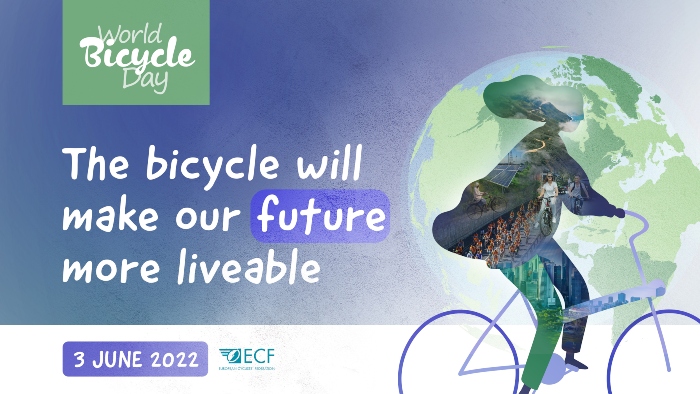
What does the bicycle mean for our future?
The places where we live have been over-designed for motorised vehicles. Thus, it is no wonder that most people drive: the dense and predictable road network makes it very convenient. This needs to change. Politicians, policymakers, urban planners, academics and civil society advocates need to plan for a redesign of cities that make active and sustainable modes of travel – walking, cycling, public transport – the easiest and thus most preferential option for inhabitants.
Doing this will lead to a more equitable system of mobility for everyone, a system in which the bicycle plays a leading role.
It will lead to a future where people will not be forced to acquire expensive motor vehicles to move around.
It will be a future in which people can walk or cycle to local shops, schools and workplaces without fear of being hit by drivers of larger vehicles.
It will be a future in which people reclaim the streets for play, social gatherings, for business, for mobility, and for all the activities that form the web of vibrant communities.
Missed the event? Don't worry! It's available online to watch: Full event recording available here.
Regions:
Topics:
Contact the author
Recent news!
Contact Us
Avenue des Arts, 7-8
Postal address: Rue de la Charité, 22
1210 Brussels, Belgium

